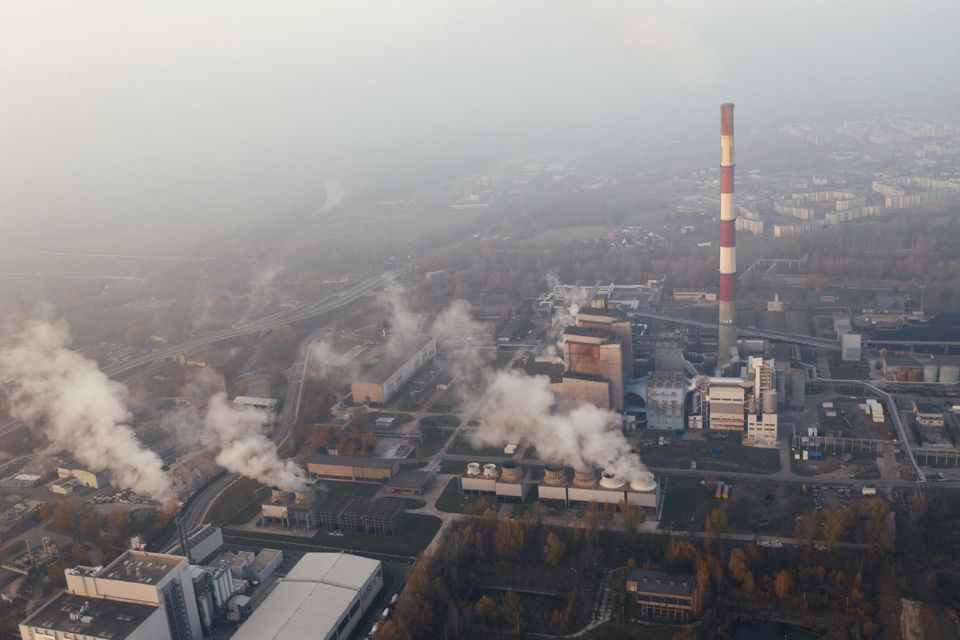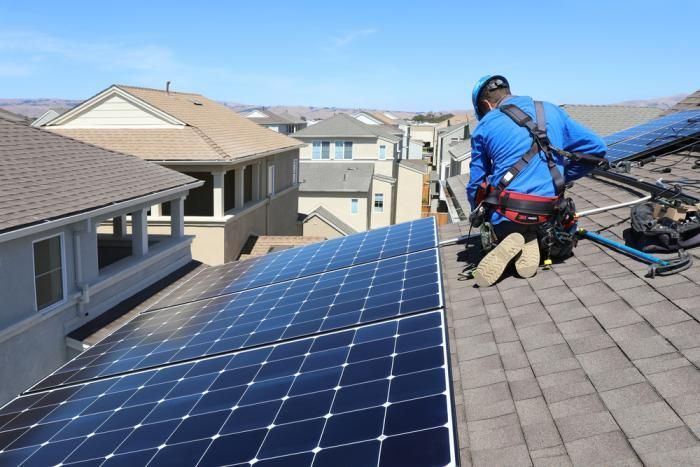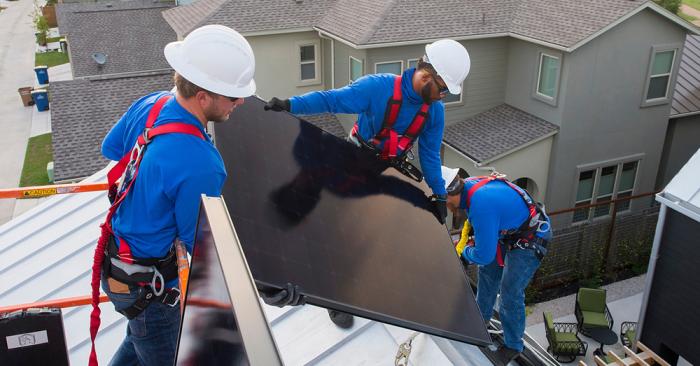Biden wants to cut U.S. climate pollution in half by 2030—here’s how
Reducing emissions by at least 50 percent will require “everything to go right,” one expert says.

After a four-year hiatus, the United States is officially taking climate change seriously again. On Thursday, President Joe Biden pledged that by 2030, the nation will slash its carbon pollution 50 to 52 percent compared with 2005 levels.
That goal, which represents America’s new “Nationally Determined Contribution” under the Paris Agreement, was announced during a two-day virtual summit Biden is hosting with leaders of the world’s largest economies, starting on Earth Day, to galvanize greater climate ambitions. It’s a bold leap forward from the Obama administration’s original Paris Agreement pledge to reduce emissions 26 to 28 percent below 2005 levels by 2025. But it falls squarely in line with what hundreds of scientists and public health experts, as well as heads of corporations, have called for in recent days.
The announcement comes the same week that the European Union agreed to reduce its carbon emissions 55 percent by 2030 compared with the 1990 levels, and the U.K. announced historic emissions cuts of 78 percent by 2035, also compared with 1990.
Many climate scientists say it’s imperative that the United States, which has put more greenhouse gases into the atmosphere over time than any other country, cut its climate-warming carbon pollution at least in half this decade. That’s necessary, they say, to limit global warming to 2.7 degrees Fahrenheit (1.5 degrees Celsius), the widely accepted threshold for preventing catastrophic damage from climate effects.
Halving emissions this decade won’t be easy, but the goal is within reach, according to independent studies and a behind-the-scenes analysis the federal government has been conducting in the lead up to Biden’s announcement. To make it happen, the administration will have to marshall all of the resources at its disposal, enabling and accelerating decarbonization across every sector of the American economy.
“If you want to get anywhere in the ballpark of 50 percent by 2030, you cannot leave anything on the table,” says Rebecca Dell, a strategist with the nonprofit ClimateWorks Foundation who helped coordinate Obama’s climate strategy for the Department of Energy. “That is a goal that requires everything to go right.”
A whole-government approach
The U.S. is currently the second biggest carbon emitter annually after China, with emissions of 6.6 billion metric tons in 2019. Its two largest sources are the transportation and power sectors, which respectively accounted for 29 and 25 percent of the 2019 total. Heavy industry, including steel, cement, and plastic production, represented 23 percent, while smaller shares were associated with agriculture (10 percent), and commercial and residential buildings (6 and 7 percent).
To halve emissions by 2030, much of the heavy lifting will need to be done by the power sector, which the Biden administration has already pledged to decarbonize by 2035. That’s because zero-carbon alternatives to fossil fuels, such as wind and solar power, are already available and being deployed at a large scale.
Roughly 40 percent of U.S. electricity came from renewables and nuclear power in 2020. Leah Stokes, an energy policy expert at the University of California, Santa Barbara, says that doubling the share of clean electricity on the grid to 80 percent by 2030 will get the U.S. halfway toward its overall goal of reducing emissions by 50 percent.
The “most important provision” needed to do so, she says, is a federal clean electricity standard that incentivizes utilities to purchase additional clean power over time. “Without that policy, we will not get to 80 percent clean [electricity] by 2030,” Stokes says.
Biden’s American Jobs Plan—the $2 trillion infrastructure package the administration unveiled in late March—pledges to establish such a standard. It also calls on Congress to extend federal clean energy tax credits used for commercial and residential solar projects, and it pledges to set up a new “Grid Deployment Authority” that will accelerate the buildout of transmission lines. A December report from Princeton University found that to reach net-zero emissions by 2050 (another Biden administration goal) the U.S. must expand its transmission systems 60 percent by 2030.
Cleaning up the electric grid will also help the transit sector reduce its emissions, since electric cars, buses, and trucks need to be powered by carbon-free energy in order to realize their full climate benefits. At the same time, automakers need incentives to make electric vehicles as affordable and accessible as gas-powered cars.
According to Colin McKerracher, who leads advanced transport analysis at energy consultancy BloombergNEF, the “single biggest thing” the Biden administration can do to tilt the transit sector in the right direction is tighten federal fuel economy standards, which were rolled back under President Trump. The administration has already signaled that it plans to announce stricter standards by July.
To further accelerate the clean transit revolution, the Biden administration has pledged to ultimately electrify the entire federal vehicle fleet and establish new grant programs that will help deploy half a million electric vehicle chargers nationwide by 2030.
Industry and farms are a challenge
Whereas fossil fuel-free alternatives already exist in the transportation and power sectors, but just need to be deployed more quickly, in the industrial sector, basic research and technology demonstration projects are needed first. Processes like steel and cement production are carbon-intensive, and alternative technologies, like using hydrogen made from renewable energy to produce steel, or capturing and sequestering carbon at cement plants, are not yet ready for commercial deployment.
Heavy industry needs to do “all of the work in the 2020 years that has already been done in the power sector,” Dell says. “So that in 2030, when we're talking about halving our emissions again by 2040, we're in the same situation for the industrial sector that we are for the power sector today.”
To that end, the Biden administration’s new infrastructure plan calls for establishing 10 “pioneer facilities” that demonstrate carbon capture at industrial plants, and for adjusting an Energy Department tax credit to encourage steel and cement makers to use the technology.
Investments in basic research are also required to help the agricultural sector cut its emissions faster, says Jane Zelikova, an ecologist and soil carbon scientist at the University of Wyoming. While strategies to reduce emissions from crop lands and put more carbon in soils exist, like planting cover crops and switching to no-till practices, more research is needed to determine the best places to deploy them at scale, she says.
“We know a lot about how soil carbon sequestration works,” says Zelikova. “But there’s a lot we don’t know. In order to predict whether certain practices will yield beneficial outcomes requires a lot more measuring and monitoring.”
Getting an aggressive climate agenda through a divided Congress won’t be easy. But key reforms like a federal clean electricity standard can be enacted through budget reconciliation, a process that allows federal spending bills to pass with a simple majority in the Senate, which Democrats have, barely. The Biden administration also doesn’t need Congressional approval to direct agencies to revise key environmental regulations, like fuel economy standards or limits on oil and gas-sector methane emissions—which are considered another key part of the U.S. meeting its climate goals and were also rolled back under Trump.
“There are a lot of pieces that the administration can get moving on right away through its own existing authority,” says Rachel Cleetus, a climate and energy policy director with the Union of Concerned Scientists.
Still, Cleetus says that Congress needs to “step up” in order to protect Americans from the dire impacts of climate change and to catalyze the nation’s economic recovery from the pandemic, two goals that she sees as “tightly interwoven.”
“These are not separate things,” Cleetus says. “Many of these [climate] solutions are exactly the kinds of things that can help jumpstart our economic recovery. There is no excuse for inaction now—we have to go big and bold in this moment.”
Are You Missing Out on Solar Power? Get started online or call us for a free quote 1-833-786-6878










